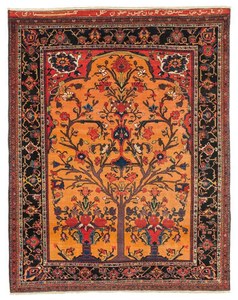The Baḵtīārī nomads move between a summer abode (yeylāq) in the high mountains (summit, Zardakūh 4,548 m) and a winter abode (garmsīr) in the western foothills adjoining the Ḵūzestān plain. The ecological boundary between the two zones coincides roughly with the course of the Āb-e Bāzoft. Thus the Baḵtīārī country falls into two different administrative provinces: Čahār Maḥāl, where the summer quarters lie, and Ḵūzestān, in which the winter quarters are included. The seasonal migrations (called bār) made by different sections of the tribe vary in length and can reach 300 km. The migration into the mountains takes place in springtime when the weather and the vegetation are at their best; it lasts longer (15 to 45 days) than the reverse migration (8 to 30 days). The migration routes are seldom, if ever, changed, because in this region there are only five or at best seven cols over which the Zagros ranges can be crossed; they lead to campsites (javārgāh) which are likewise almost always the same, being fixed by longstanding conventions. As is well known, these routes are extremely arduous. The nomads suffer frequent accidents and losses of livestock when they clamber over snow-covered cols and through rock-encumbered gorges and when they either swim or float on rafts held up with inflated goatskins across the Kārūn and other raging rivers at the time of the snow-melt. Despite all these difficulties, seasonal migration is necessary because of the prevalence of cold and snow in the yeylāq from October to April and heat and drought in the garmsīr from May to September, and often also the exhaustion of the pastures after several months of intensive use. Other possible ways to solve the problem have been suggested, for example to combine sheep folding with fodder crop cultivation and short-range transhumance; but for the time being, in the absence of any satisfactory alternative, nomadism remains the only feasible technique for efficient pursuit of livestock raising in this region. In Iranian mythology, the Bakhtiaris are considered to be descendants of Fereydun, a legendary hero from the Iranian national epic, Shahnameh. They are also considered to be directly descended from Cyrus the Great.



